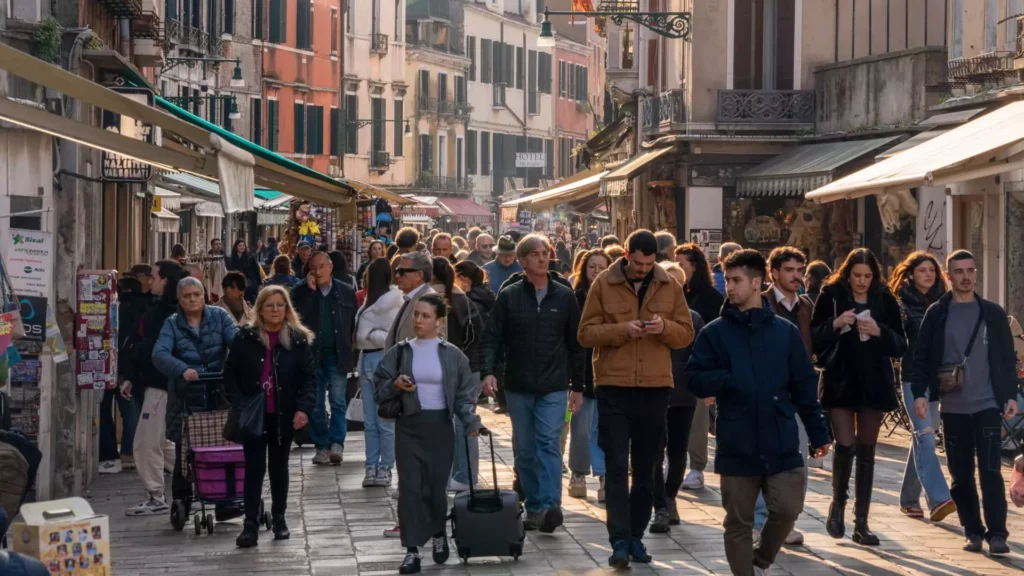![]()
Italy, a country famous for its historical landmarks, picturesque views, and delectable cuisine, is facing a crisis of overtourism. The influx of 60 million tourists last year alone has put a tremendous strain on the country’s infrastructure, creating chaos on its narrow roads and overwhelming its ancient structures. Boat drivers in popular destinations like Bellagio, Lake Como are expressing frustration as traffic jams become a daily occurrence, affecting not only locals but also visitors trying to navigate the congested streets.
While tourism contributes significantly to Italy’s economy, accounting for 10.2% of its GDP and employing 4.4 million people, the drawbacks of overtourism are increasingly evident. From shortages of staff in hotels and restaurants to the need for seasonal workers in various regions like Sardinia, the industry is struggling to keep up with the demand. Despite the affordability of food and beverage prices in comparison to cities like New York, the shortage of personnel to serve tourists is a pressing issue that requires immediate attention.
Popular attractions such as Da Vinci’s “Last Supper” in Milan and iconic restaurants frequented by celebrities like George Clooney in Lake Como are facing new challenges due to the overwhelming number of visitors. Venice has implemented entrance fees for day-trippers not staying overnight, while reservations at exclusive venues like Villa D’Este are nearly impossible to secure. The restrictions on visitor numbers to protect delicate artworks and ensure a quality experience are indicative of the struggle to balance tourism’s benefits with its negative impacts.
The transportation landscape in Italy reflects the tensions between traditional taxi services and innovative disruptors like Uber. While licensed taxi drivers express concerns about competition and job security, tourists face the challenge of navigating Italy’s narrow roads and limited transportation options. With Uber’s limited presence in the country due to strict regulations, travelers often rely on conventional taxi services, which can be expensive and difficult to access in remote areas.
Being a tourist in Italy is no longer just about sightseeing and sampling local delicacies; it has become a logistical challenge that requires meticulous planning and flexibility. From securing reservations at popular restaurants to booking reliable transportation in advance, visitors must navigate the complexities of overtourism to enjoy their Italian getaway fully. The sublime moments, such as admiring Da Vinci’s masterpiece or savoring a traditional Milanese meal, are juxtaposed with the frustrations of navigating crowded streets and facing limited service options.
Italy’s struggle with overtourism highlights the complexities of managing a thriving tourist industry while preserving the country’s cultural heritage and quality of life for residents. As travelers continue to flock to iconic destinations like Lake Como and Venice, finding sustainable solutions to address overtourism’s challenges will be essential. By striking a balance between promoting tourism, protecting historical landmarks, and supporting local communities, Italy can create a more resilient and enjoyable travel experience for visitors and residents alike.

Leave a Reply